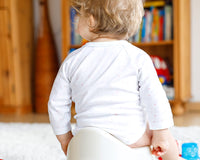
Here, at NIGHT N DAY, we’re committed to breaking down the taboos and seals of silence associated with incontinence and we’re committed to breaking down the stigma attached to continence.
Incontinence may be a taboo subject that many are unwilling to talk about, due to the stigma attached to it, but the reality is that nearly 40% of Australians will, at some point in their lives, be affected by incontinence.
There’s definitely a change in the air and we can feel the shift towards a better understanding of continence and how it affects or will affect many people at some point in their lives.
The fact that approximately 38% of Australian Adults, and approximately 40% of Australians overall are affected by incontinence, proves that if you are affected, you certainly are not alone, or if you care for someone who is affected by incontinence, you too are not alone.
Research and data, ‘Continence Health in Australia’, released by the Continence Foundation of Australia, dated June 2019, indicates that reportedly 1 in 3 Adult Australians (approximately 38%) are affected by incontinence.
In the latest Continence Foundation of Australia Pre-Budget Submission 2021-2022 it was reported that Incontinence affects overall 1 in 4 Australians, resulting in high economic ramifications for consumers and also for the health and as well as aged care
As of November 2021, Australia’s population is over 25.8 million according to the Australian Bureau of Statistics population clock.
Subsequently, the overall number of Australians experiencing incontinence at some point of time in their lives, may continue to grow in the future.
 According to 'healthdirect' there are over 5 million people already living with incontinence.
According to 'healthdirect' there are over 5 million people already living with incontinence.
You can try and help your situation by doing kegel and pelvic floor exercises. Take some time to read more and practice with the help of our blogs for Kegel and Pelvic Floor exercises for Men and Kegel and Pelvic Floor exercises for Women.
The Continence Foundation of Australia has the following statistical information:
STATISTICS ON URINARY INCONTINENCE
- Urinary incontinence affects up to 10% of Australian men and up to 38% of Australian women.
- 80% of those with urinary incontinence in the community are women2.
- Over half of women living in the community with urinary incontinence are aged under 50 years.
- 65% of women and 30% of men sitting in a GP waiting room report some type of urinary incontinence, yet only 31% of these people report not seeking help from a health professional.
- 70% of people with urinary leakage do not seek advice and treatment for their problem.
- Urge incontinence [a sudden and strong need to urinate (wee)] commonly occurs with prostate disease. It is low in younger men and increases to 30% for men aged 70-84 and 50% for men aged 85 years and over.
STATISTICS ON FAECAL INCONTINENCE
- Faecal incontinence affects 6% of Australian men and 10% of Australian women.
- 62% of those with faecal incontinence in the community are women.
- 44% of women living in the community with faecal incontinence are aged under 50 years.”
NIGHT N DAY is a registered NDIS provider.
----------------------------------------------------------------------------------------------
Should you require any product assistance … Did you know that we manufacture a complete range of incontinence products including absorbent underwear and waterproof pads? Some of these products also double as period-proof underwear.
We're with you Night n Day
If you have any questions about incontinence or want to know what incontinence products are the best for you or your loved one don’t hesitate to contact our friendly Customer Service team
- THERE’S NO SUCH THING AS A SILLY QUESTION!
----------------------------------------------------------------------------------------------
Email: gday@nightnday.com.au
Australia: (02) 9531 2011
International: +61 2 9531 2011
P: +61 2 9531 2011
Disclaimer: No content on this website, or in this article, regardless of date, should ever be used as a substitute for direct medical advice from your doctor or other qualified clinician.







